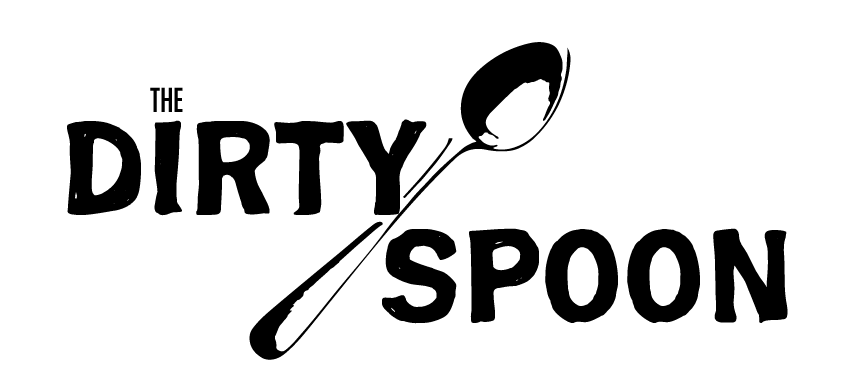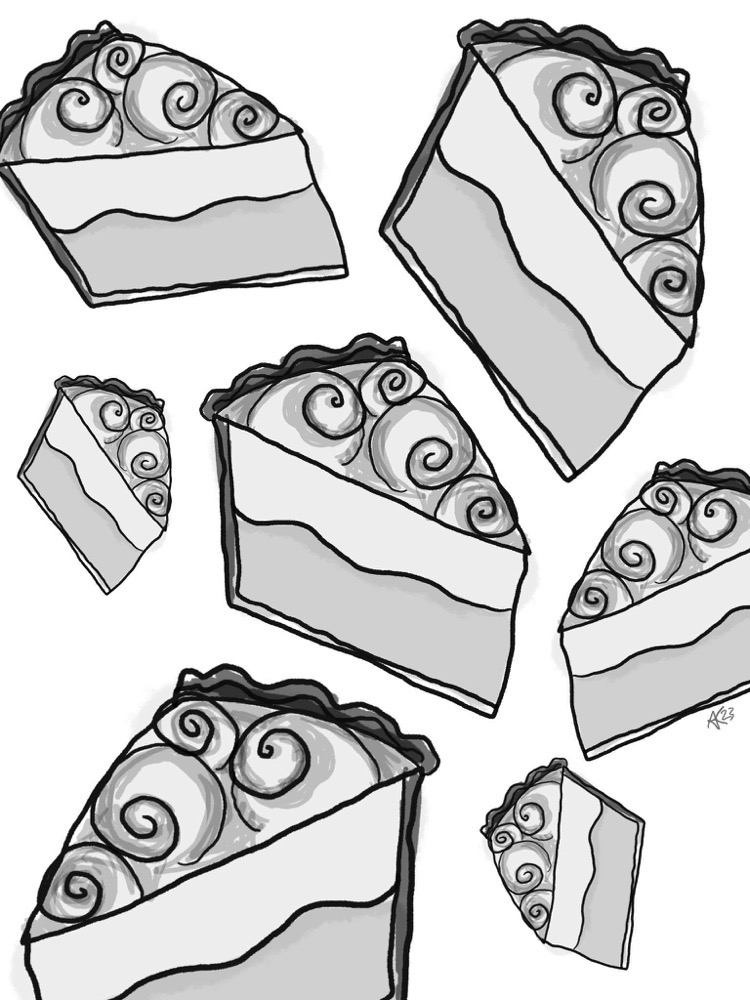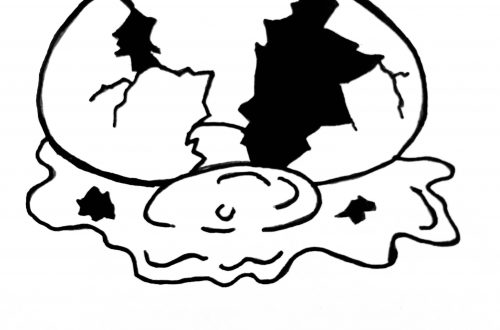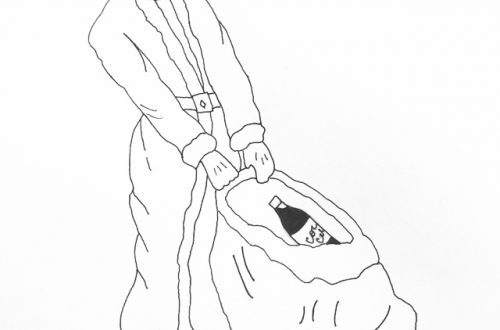by Rebecca Brothers
Rebecca’s essay appears in episode 41 of The Dirty Spoon Radio Hour.
I don’t want to spend my life not having good food going into my pie hole. That hole was made for pies. – Paula Deen
So the pie isn’t perfect? Cut it into wedges. Stay in control, and never panic. – Martha Stewart
Our Better Homes and Gardens Pies and Cakes book is stiff with meringue and gritty with sugar and salt. It falls open to the cream pie section of its own accord, and traces of chocolate and lemon custard bear witness to the thorough testing of each recipe. I could find this page before I could reach the shelf where the book lay, and I could ladle out each ingredient in our avocado green Tupperware measuring cups before I could really count. Nothing motivated pudgy little me more than dessert, so even if you had to read and do fractions to make a pie, I was all in.
Learning to cook at your mother’s elbow is a time-honored tradition for children, like crying fits in dressing rooms during prom season. My mother’s boundless patience was a blessing, her repressed groans at spills and splatters always followed by “Let me show you something,” instead of the more colorful words she was biting back. I once upended a full 5-pound bag of Domino sugar onto the linoleum. My mom started to speak, but deftly shifted gears around the hairpin turn of her tongue to say “Sh…sugarfoot!” My cooking skills lacked everything but confidence, my round arms pumping the wooden spoon in the saucepan while pigtails bounced. I learned (the hard way) that the custard will scorch and stick if you let up on that interminable stirring. I learned the boiling point of pudding pie is about a million degrees higher than my quick temper. And I learned you can work all morning making a beautiful pie and still have to wait the rest of the damn afternoon for it to cool and set (and that if you say “damn,” you will not get to eat the pie and all that waiting and stirring and sitting through another episode of Little House on the Prairie was for naught).
There are lessons in cooking I am still learning, like that separating the yolks and whites does actually matter, and that close is not anymore valid in egg finesse than it is in tax preparation. Some may brag of horseshoes and hand grenades in their metaphors, but cooks know the real disappointment is finding scrambled egg in your coconut cream.
The newly married me wanted to make a pie for my husband because my mom and I always delighted in presenting my dad with a cool slice at the end of a hot workday. The pies were so good, and they were so much trouble, and my mother had taught me well (and accurately) that not everyone can make a good pie. How many chocolate creams had she and I turned out in the 18 years before I left for college? A hundred, at least. I was particularly proud of my crust. I had “a light touch,” an innate gift my mom bragged about to her friends. My Crisco crusts were flaky and tender, never tough, and I would never have known to be vain about them if mom hadn’t pointed it out to me. So I had that down pat. And I had learned to scoop and level, measure and count every drop of vanilla, milk, chocolate, coconut, or imitation rum that we’d put in all of those hundreds of pies. And I’d already failed at dinner many times in our newlywed life: curry chicken in the crockpot would have been fine if I hadn’t added the rice in there, too. We ate the yellow wallpaper paste concoction for three days before I finally gave up on it. Pie would be my redemption.
But I’d never really read the old cookbook until I was making that first pie on my own. Mom had sent the book with me into my married life. After the shock of my first year of teaching, at last, melted into the June humidity, I pulled it down off the shelf. I had time on my hands, so I didn’t skip to the recipe. I cracked that sucker open to the first page:
A man’s first choice for dessert? Pie! That’s why one of the first baking ventures of a bride is
likely to be a pie, and why experienced cooks serve pie for almost every special occasion.
I flipped back to the publication date: 1966. My mother had been sixteen when the book was first released, wearing her hair in a flip and begging for sweater sets at Christmas. She probably learned pie-making as much in home economics as she did at home. But did she learn to turn out her pie crust to please a man? Knowing my mother, no. She was her own woman, even in heels and nylons, brave enough to tell her pastor to mind his own business when he tried to tell her she shouldn’t cut her hair, as it was a woman’s glory. I believe her exact words were, “I don’t tell you how to wear your hair. You don’t tell me how to wear mine.” This was revolutionary stuff in the 60s in the south, a teenager daring to talk back to the minister. And besides, my mother was herself a sucker for a good slice of cool custard cream. The pie was for her. She just let her dad eat it, too.
Reading Paula Deen’s and Martha Stewart’s quotes now about pie, it all makes sense. We do not need to demur; we can shove every forkful of dessert into our own pieholes, unapologetic if the slices are not perfectly symmetrical. Martha says so.
My mother taught me to walk that tightrope between modern feminism and my traditional roots long ago. But I do have a husband I love dearly, and his many talents don’t include dessert making, so I cook the pies and we live well in that happy, sugared state.
Here in Kentucky, we are surrounded by pie. Shakers, made famous for their furniture, also gave us a 19th century recipe for a lemon pie unlike any I’ve encountered elsewhere. New Yorker writer Sue Hubbell tells us about her own encounter with Shaker Lemon pie in her book From Here to There and Back Again (which has a nice hobbit-like ring to it. I’m sure hobbits love their pie). In a chapter called “The Great American Pie Expedition,” she explains that Shakers saw the medicinal value of lemons. I’m sure this had something to do with preventing scurvy in the land of cornbread and squirrel stew. Hubbell tells us the Shakers would have thought it a sin to waste any part of the lemon. Now I can hear you already: the juice, yes. That’s good stuff. And the zest? We love to sprinkle that everywhere. But are you telling me that there’s a recipe for a pie, an edible pie, that uses the whole lemon? Yes. Yes, I am. You slice the lemons paper thin, add sugar and eggs, and damn if it doesn’t do its own magic as it bakes in your perfectly flaky pastry. I love that Hubbell stopped in our state and ate that pie. Having someone from up north validate our cuisine like that without making fun is a rare treat. She was on a road trip around the whole country on her Pie Expedition. My favorite part of her chapter has this to say about the evils of microwaving pie, a statement I think we can all adopt: “Freshly made, warm pie is one of life’s better things, but after it cools it should be allowed to grow old gently rather than brought back to an unnatural warmth.”
Kentucky also has this thing called the Derby, the “most exciting two minutes in sports”. What our most famous horse race lacks in length, it certainly makes up for in pomp and circumstance. In Louisville, the day before Derby is a city-wide holiday; school is not in session. There are weeks of parades, hot air balloon races, and a fireworks display with artillery worthy of UN inspection. The buildup cannot be overstated. And of course, there is themed food, including a contentious brand-name pie sharing the race’s name. I’m not sure I can even type the name of that pie without threat of litigation. There is one bakery allowed to call the pie by that name, under trademark protection. And it is pretty good: a concoction of pecans, chocolate, and bourbon in a pastry so drunk and decedent, you’re sure Hunter S. Thompson, if he had been a dessert, would have been this one.
For me, it’s the custard pies, the cream pies. They are what danced in every diner’s rotating pastry case and the real fuel for truck drivers. They were the pride and joy of every southern woman I knew. The delight of sweet filling and flaky pastry brings me right back to my childhood supper table with my mom and dad, all of us sitting in our 1989 harvest gold kitchen, perpetually smiling into our lemon meringue.
Original artwork by Alex Knighten
About the Author
 Rebecca Brothers writes and teaches in her native Kentucky. She loves to share the best parts of her home state, including the people and pies, in her writing. You can find her on Facebook and on Twitter @ReaderCapitalR. She makes Louisville home with her husband and two wonderful kids.
Rebecca Brothers writes and teaches in her native Kentucky. She loves to share the best parts of her home state, including the people and pies, in her writing. You can find her on Facebook and on Twitter @ReaderCapitalR. She makes Louisville home with her husband and two wonderful kids.





